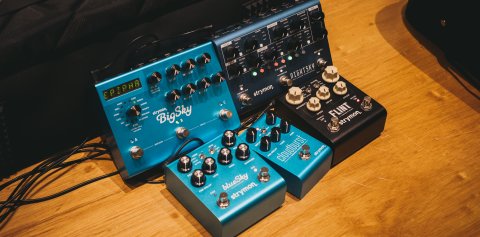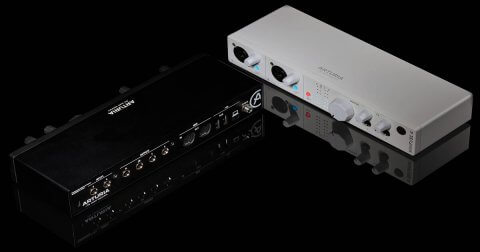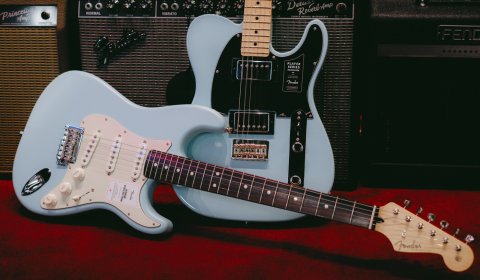“Store in a cool and dry place”. “Guitar humidity is paramount for your instrument’s best performance”. Sound familiar?
So many of the products we buy come with that label, and it’s not surprising we take it lightly. But reconsider that advice when it comes to your guitars! We’ve spent too much of our hard-earned money on these precious instruments to treat them poorly.
If you’ve ever played an old acoustic guitar that’s been untouched for years, and you find its action high and uncomfortable to play, chances are that the guitar has suffered from some sort of humidity-related damage.
Here in South East Asia, where the tropical weather means it’s humid all year round, we’ve got to take special care to keep our guitars looking and sounding their very best. With the humidity here often hovering between 70%-90%, these conditions – including yes, bedrooms and closets – are no happy places to store our guitars in. Damage from adverse guitar humidity is a real issue, and repairs don’t come cheap either!
Thankfully, we’re not fighting a losing battle, and there are many things you can do to keep your guitars in optimal condition.
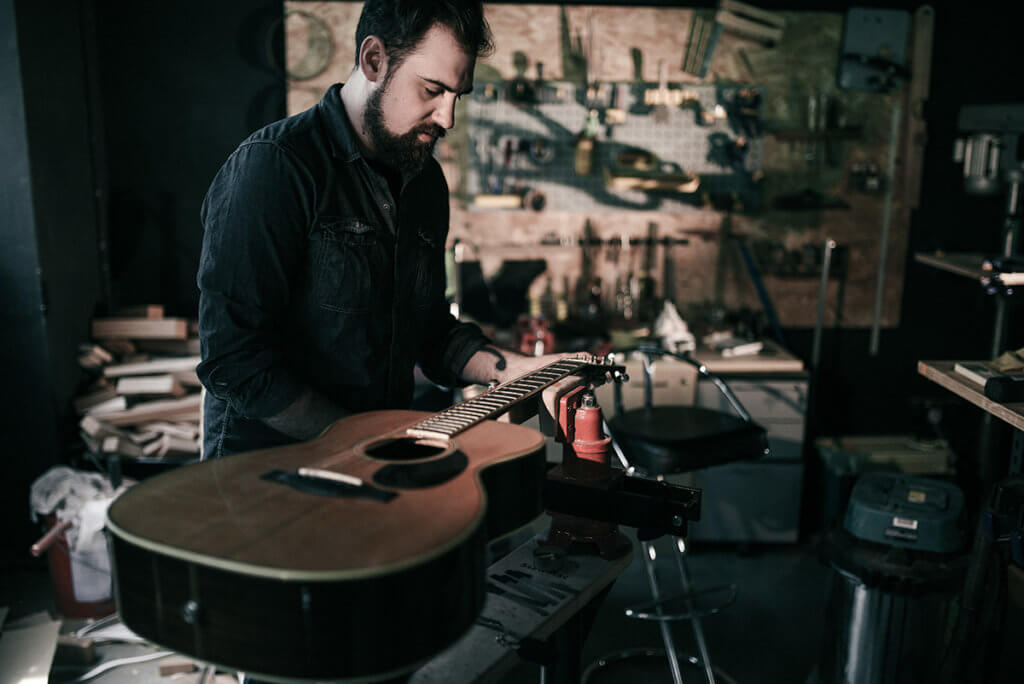
We speak to James, resident guitar technician/luthier for Well Played Gear, who has seen firsthand and repaired many guitars damaged by humidity. Here’s his advice.
Why does humidity matter to guitars?
Guitars are built in a controlled environment. The same goes for storing the wood used to build these guitars. Many experts like the ones over at Taylor Guitars state the ideal humidity to be at 45-55%. There’s a good reason why there’s this need for regulated humidity – when wood is too wet, it makes glueing difficult. And the same goes for an environment that is too dry – wood tends to warp and split.
In a tropical climate, high humidity is a constant battle all year round. But our friends who experience the four seasons aren’t spared from these issues either. In the winter seasons, the dry climate requires guitars to be humidified, and when it starts getting humid during the summer, they need to be dehumidified.
- Guitars want to be as close to 40-50% humidity as possible. That’s the environment they were manufactured in.
- A happy medium is 45%.
What are some signs that my guitar has suffered from the humidity?
We expose our guitars to the environment constantly, when it travels from home to the stage, placed in a car boot or aeroplane overhead compartment – guitars are meant to be played. But it doesn’t mean they are spared from the elements once put back into their case and stored.
The tell-tale signs of an acoustic guitar with damage from humidity can vary from:
1. Swelling below the bridge
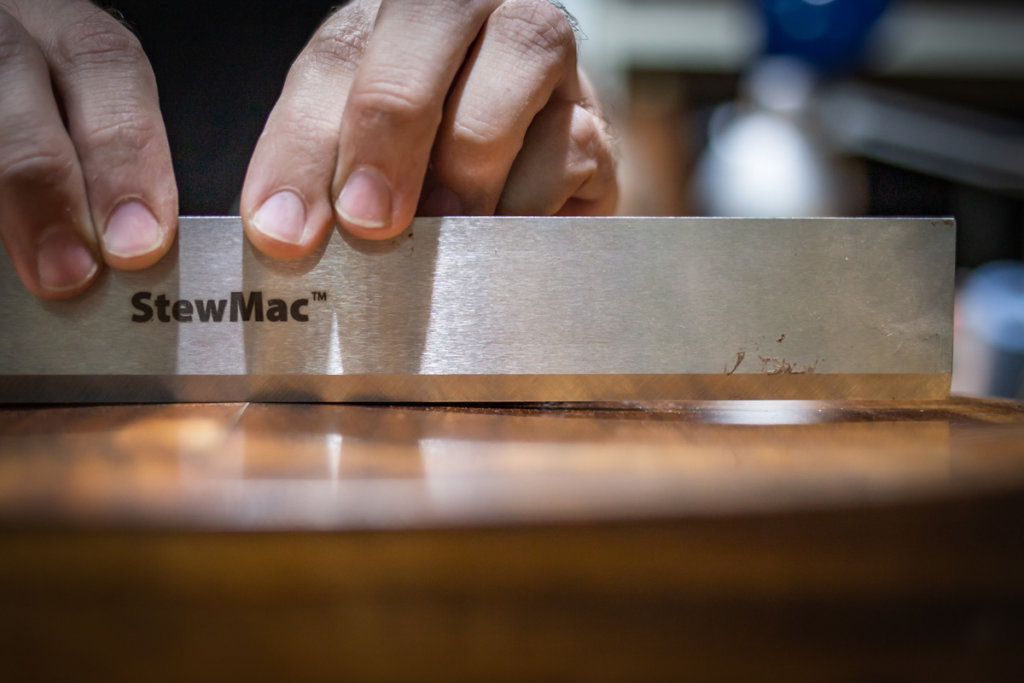
High moisture content in the top and back of the guitar will cause the wood to swell and belly behind the bridge. As the top rises, the action becomes unusually high, making playing more difficult. The swelling can also cause the corners of the bridge to pop loose.
2. Glue joints can fail
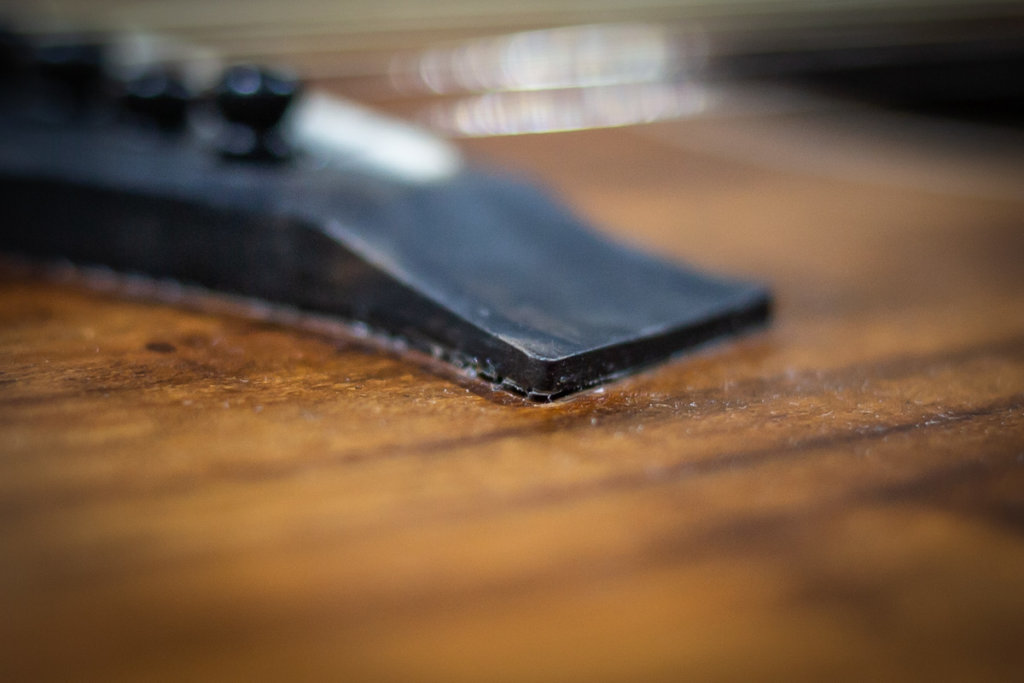
The glue that holds the joints and braces can loosen, affecting the instrument’s structural integrity. Tone becomes lifeless and dull.
3. Frets and nut have “shrunk”
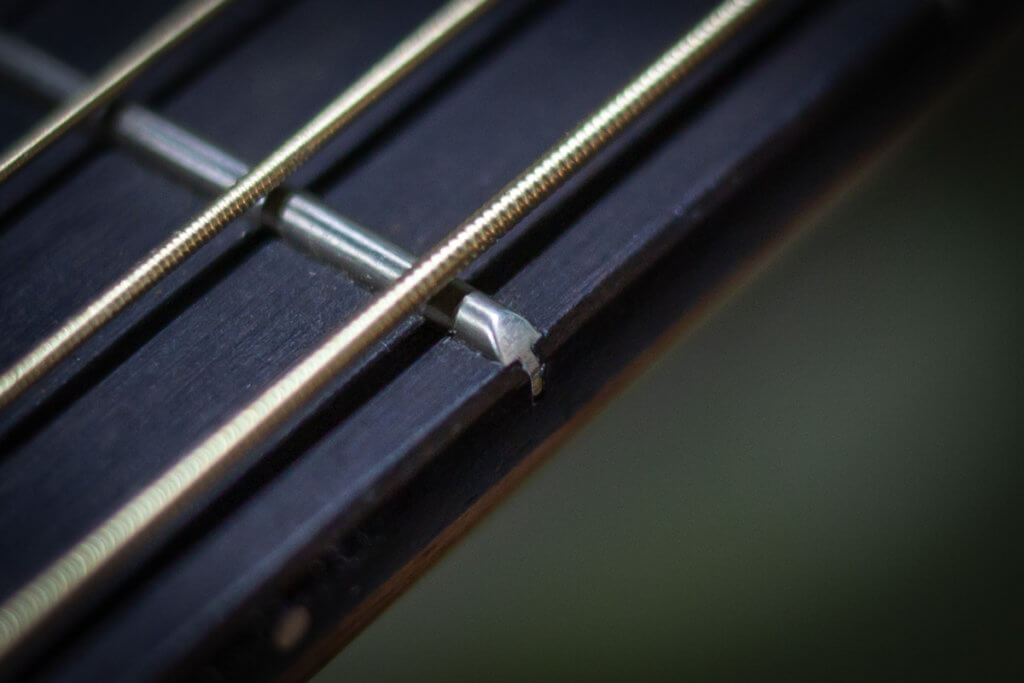
The frets don’t sit flush with the edge of the fretboard. The fretboard has expanded due to the high moisture content. High moisture also causes the frets and metal components to start oxidising.
4. Split middle seam on the back of the guitar
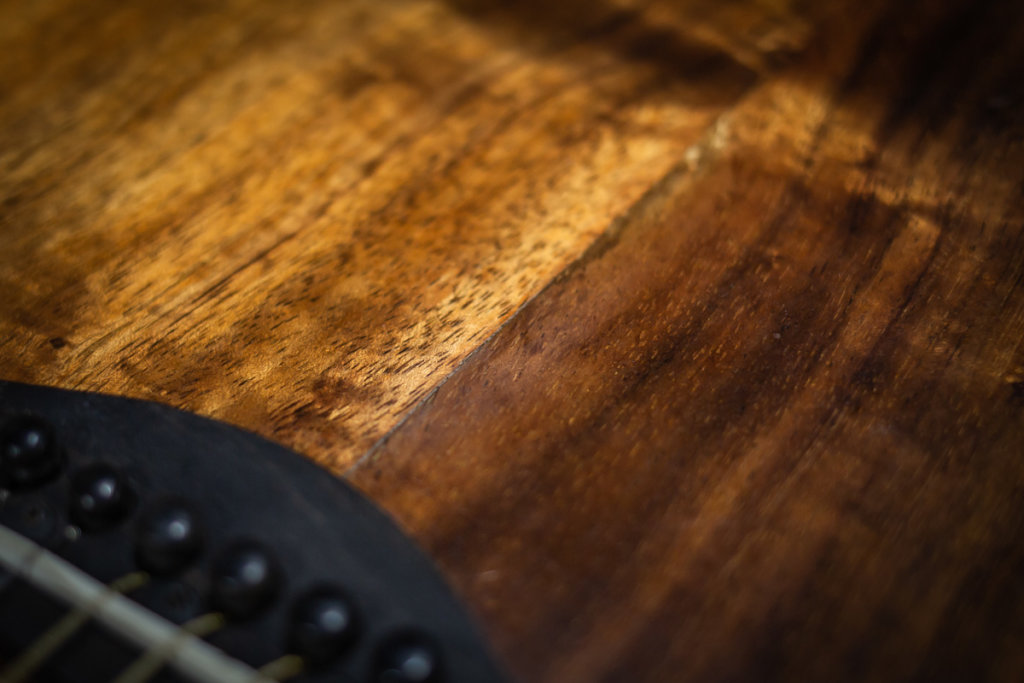
The first signs of this usually take place when the finish has started to form cracks down the middle.
Are electric guitars spared from the effects of humidity?
Unlike acoustic guitars, solidbody electric guitars are crafted from a thick, solid piece of wood. Even a hollowbody electric guitar like a Gibson ES-330 uses significantly thicker plies of wood for its top compared to that of an acoustic. As a result, the body of an electric will not be as susceptible to the effects of humidity as an acoustic guitar, but proper storage still matters. Other parts of the guitar like its fretboard and metal parts can oxidise due to the high humidity.
What should I NOT be doing?
Doing nothing! Leaving your guitar in your bedroom or storeroom exposes it to the humid environment whether it’s in its case or not. Keep your instrument away from windows or warm and humid areas.
When we travel with our instruments, do not leave them in your car boot for extended periods.
Some people think it is enough for the guitars to be stored in an air-conditioned room. Unfortunately, air-conditioning does not truly hold humidity at a constant level, and very few of us leave the air-conditioning on all the time!
What should we be doing to care for our guitars in the humidity?
The first goal would be to store your guitars in an environment where humidity can be controlled and maintained at the aforementioned range. There are a few ways to do this.
If you store all your guitars in your bedroom, the best thing you can do is to dehumidify the entire room. Room dehumidifiers are available commercially, big and small, sometimes even portable. Depending on the size of your room, you’d want to get one that’s best suited for your needs.
Even with a dehumidifier in place, it’s best to know for sure what your room’s humidity is, as it can fluctuate throughout the day when the door or window gets opened. There are sensors that help monitor both humidity and temperature, like this one from Taylor.
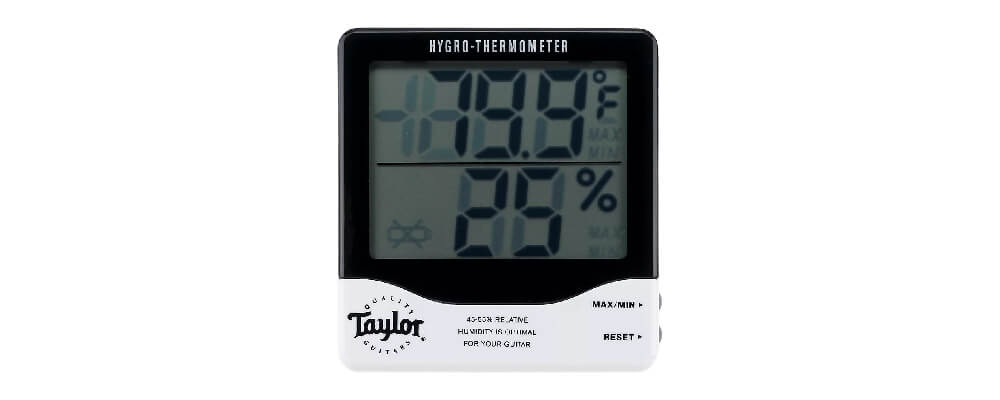
For those who aren’t willing to spend that much money, what would be the most cost-effective humidity solution?
A room humidifier sometimes isn’t always an option, especially when you’re travelling. Desiccants that are purpose-designed for guitar dehumidifying are readily available and inexpensive, and they fit right in your case.
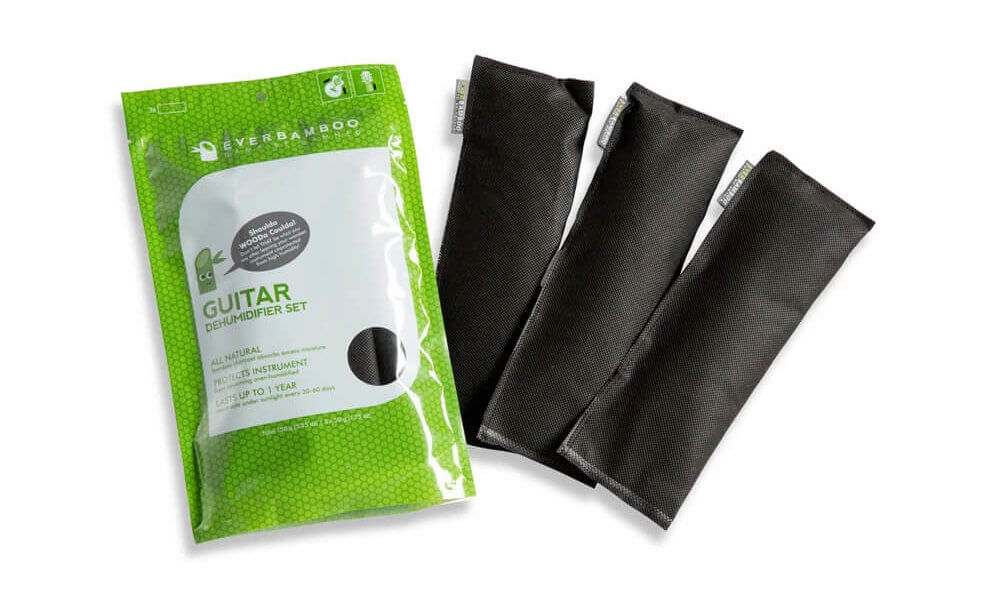
Using them is simple – just place them in your guitar case. They work better in a hard case, and you just need to follow the manufacturer’s guidelines on when to get them replaced. Simply place it in your case, close the lid and let it do its thing.
The downside of these dehumidifying packs is that you’ll need one for every case, which adds up when you have a large collection of guitars!
Just like your room, you shouldn’t be guessing if your case is properly dehumidified or at the right humidity. There are many hygrometers that fit perfectly in a case and some even will notify you on your phone when humidity levels fall outside its recommended range.

Our guitars are just like us and they, too, require care and attention to play their best and last for years to come.
So, to recap James’s top tips on caring for our guitars in the humidity:
- Guitars want to be in the 45-55% humidity range. Anything above or below can potentially cause damage which costs a lot to repair.
- Acoustic guitars are more susceptible to humidity damage.
- Store your guitars in their case in a humidity-regulated room. A room dehumidifier does the trick.
- Keep your guitar away from warm, moist areas. Don’t keep your guitar in a car boot for long periods of time.
- Don’t guess the humidity of your room or guitar case, use a hygrometer.
- A dehumidifying pack is a budget-friendly solution that you can place in your guitar case. You need to replace this after its lifespan ends.
If you’d like to shop our full range of guitar accessories and care products, head over to our online store. If you’re looking for any guitar-related advice, feel free to drop us a message and we’d be happy to help you out!
Here’s to many more years of playing and enjoying your guitar (humid climate or not).
Read more: Beginner Guitars Under S$700: Electric Guitars

